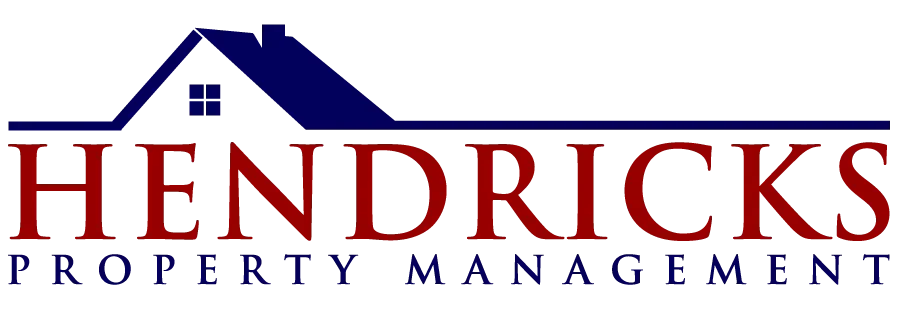What Makes a Great Rental Property Investment Today
Figuring out what makes a truly good rental property takes more than instinct. A rental property investment needs to perform in today’s market, hold its value over time, and give investors room to grow their returns. This guide covers everything—from property types and financial metrics to strategy, management, and risk—so you and your investor clients can make smarter, lower-stress decisions.
Table of Contents
Why It Matters
Not every rental makes sense just because it has a door and four walls. A strong rental property investment strategy focuses on repeatable results—not speculation. For REALTORS® working with investor clients, helping them identify those repeatable wins builds trust and grows long-term business.
This matters not only for your client’s returns, but also for your reputation. When you guide someone toward a property that performs, that investor will remember you next time they buy—or when they send referrals your way.
Location and Demand
Location drives both rent potential and tenant quality. It affects vacancy rates, appreciation, and overall ROI.
Smart investors look beyond just ZIP codes. They consider walkability, public transportation, proximity to major employers, school ratings, new development activity, and local ordinances that could impact renting.
Examples of strong rental locations include areas near growing college campuses, expanding suburbs with new retail construction, and infill neighborhoods that are getting infrastructure upgrades.
The ideal location also depends on the strategy. A long-term buy-and-hold investor may prefer a suburban area with stable family renters. A BRRRR investor might target older homes in transitional neighborhoods where value can be unlocked with rehab.
Financial Metrics That Matter
These are the numbers investor clients rely on:
Cap Rate – Annual net operating income divided by the purchase price
Cash-on-Cash Return – Net income divided by actual cash invested
Gross Rent Multiplier (GRM) – Purchase price ÷ annual rent
Net Operating Income (NOI) – Income after operating costs, not including financing
Break-Even Ratio – Expense-to-income ratio (target under 85%)
Run every property through these. You don’t need perfect math, but you do need to know if the deal works under stress.
Property Condition and Maintenance
A rental doesn’t need luxury finishes. It does need functionality and low upkeep. That means:
Solid roofing and drainage
Updated HVAC
Plumbing and electrical systems that pass inspection
No foundation problems
Pest- and water-damage free
Have clients plan five years of maintenance and budget accordingly. A leaky roof or broken sewer line can wipe out a year of profit.
Matching Strategy to Investor Type
A one-size-fits-all deal rarely works.
Buy-and-Hold investors want stable properties with low vacancy and good tenants
BRRRR investors want margin for rehab and strong resale
Short-term rental owners need local law awareness and high finish quality
House hackers want flexible floor plans or ADUs
Out-of-state investors need management support and low-maintenance properties
Your job is to guide them to what matches—not just what’s available.
Types of Rental Properties
Single-family homes attract long-term renters
Duplexes and triplexes bring better income per square foot
Small multifamily gives scale without jumping to commercial lending
Condos/townhomes are easier to manage but come with HOA fees
Build-to-rent subdivisions offer brand-new inventory and institutional stability
Each type has a place in a portfolio, but it depends on how the client wants to grow.
Risk, Exit Planning, and Flexibility
Even a great deal can turn south. Help your client answer:
What happens if rent drops?
Can they sell without penalty?
Can they convert the property later (STR, owner-occupant, etc.)?
Do local laws support owners if tenants stop paying?
Good investments allow for a pivot—not just profit.
Financing and Lending Considerations
Loan products change frequently, but some staples remain:
Conventional financing works best for under-4-unit purchases
DSCR loans work when the property cash flows but the borrower doesn’t show strong personal income
Portfolio loans are ideal for bundling assets or repeat investors
Hard money fits BRRRR buyers needing fast access to capital
Investors should get prequalified with lenders who specialize in rental property investment—not just residential loans.
Legal and Regulatory Considerations
Investors need to understand local, state, and sometimes federal rules. These include:
Rent control or caps
Notice requirements for tenant access
Short-term rental bans
Local licensing or inspections
Legal limits on security deposits or lease terms
Staying compliant protects income and avoids costly legal mistakes.
Tenant Demand and Screening Factors
Understanding local renter profiles helps position the property for success. You’ll want to research:
Average household size
Occupation mix (white collar, service industry, students)
Commuting patterns
Parking or public transit reliance
Renter-to-owner ratios
A great rental serves a renter profile that exists—and one that sticks around.
The Value of Professional Property Management
Smart investors outsource the hard stuff. A great property manager handles:
Showings and leasing
Rent collection
24/7 maintenance
Compliance and lease enforcement
Reporting and owner communication
At Hendricks Property Management, we make it simple for REALTORS® too. You refer the client, we manage the headaches, and you keep your relationship strong. You also get $500 per signed management contract, paid at signing—not when the unit rents. Learn more at sarents.com/realtor-referral-program.
Renovations That Actually Add Rental Value
Not every renovation pays off, but these usually do:
Durable LVP flooring
Modern cabinets and counters (shaker and quartz styles)
LED lighting
Washer/dryer hookups
Smart locks and thermostats
Avoid over-improving. Upgrade to meet tenant expectations, not beat comps by 3 levels.
Researching a Local Rental Market the Right Way
Before closing, every investor should know:
Median rent by unit size
Days on market for rentals
Recent population trends
New construction nearby
Major employers within commuting distance
This helps align purchase price with actual income potential—not wishful thinking.
Market Cycles and Timing Your Purchase
Markets move in cycles—expansion, peak, contraction, and recovery. These stages affect prices, rent growth, and buyer competition.
Advise clients to look for deals:
During seasonal slowdowns (late fall and winter)
In neighborhoods still recovering from previous dips
When sellers offer concessions due to rising interest rates
During dips in construction activity, when inventory tightens
You can’t time every deal perfectly, but timing still matters.
Scenario: A Realtor Helps an Investor Avoid a Money Pit
An investor wants to buy a cheap triplex in a “gentrifying” area. You check:
The leases (one nonpaying tenant)
City code enforcement (property has open violations)
Comps (rents were overstated by $300 per unit)
Repairs (new sewer line needed)
You steer them toward a slightly more expensive but well-managed 4-plex with full leases and modern systems. They close, cash flow is predictable, and they ask you to help them find their next deal.
Final Takeaways for REALTORS®
You don’t need to be a landlord to be a great advisor. You just need to understand what drives returns, how investors think, and when to bring in a management partner.
Know how to:
Spot cash flow killers
Break down simple ROI models
Catch red flags in leases and inspections
Protect your relationship with smart referrals
That’s how you become their go-to agent—not just for one property, but for a portfolio.
FAQs
-
It needs consistent demand, stable returns, and strong long-term value.
-
Start with cap rate, cash-on-cash return, tenant demand, and repair needs.
-
Buy-and-hold is a solid foundation. BRRRR or short-term rentals work in the right markets.
-
Focus on location, property condition, rent comps, and legal compliance.
-
Cap rate measures the property’s yield. Cash-on-cash looks at the investor’s return on invested capital.
-
Item description
-
Single-family homes are simpler. Multifamily offers scale. It depends on your goals.
-
Late fall and winter often offer better pricing. The best time is when the deal works.
-
If time, compliance, or repairs feel overwhelming, management is worth it.
Conclusion
A great rental property investment doesn’t just generate rent—it gives your client peace of mind. When you help them find the right deal, structure the right strategy, and partner with the right management team, you become more than a transaction—you become a trusted part of their team.
At Hendricks Property Management, we make that easier. You focus on sales. We handle the rest. And we thank you with a $500 referral bonus, paid at signing.
Let’s help more clients buy properties they feel good about. Then keep them rented, managed, and profitable—together.

